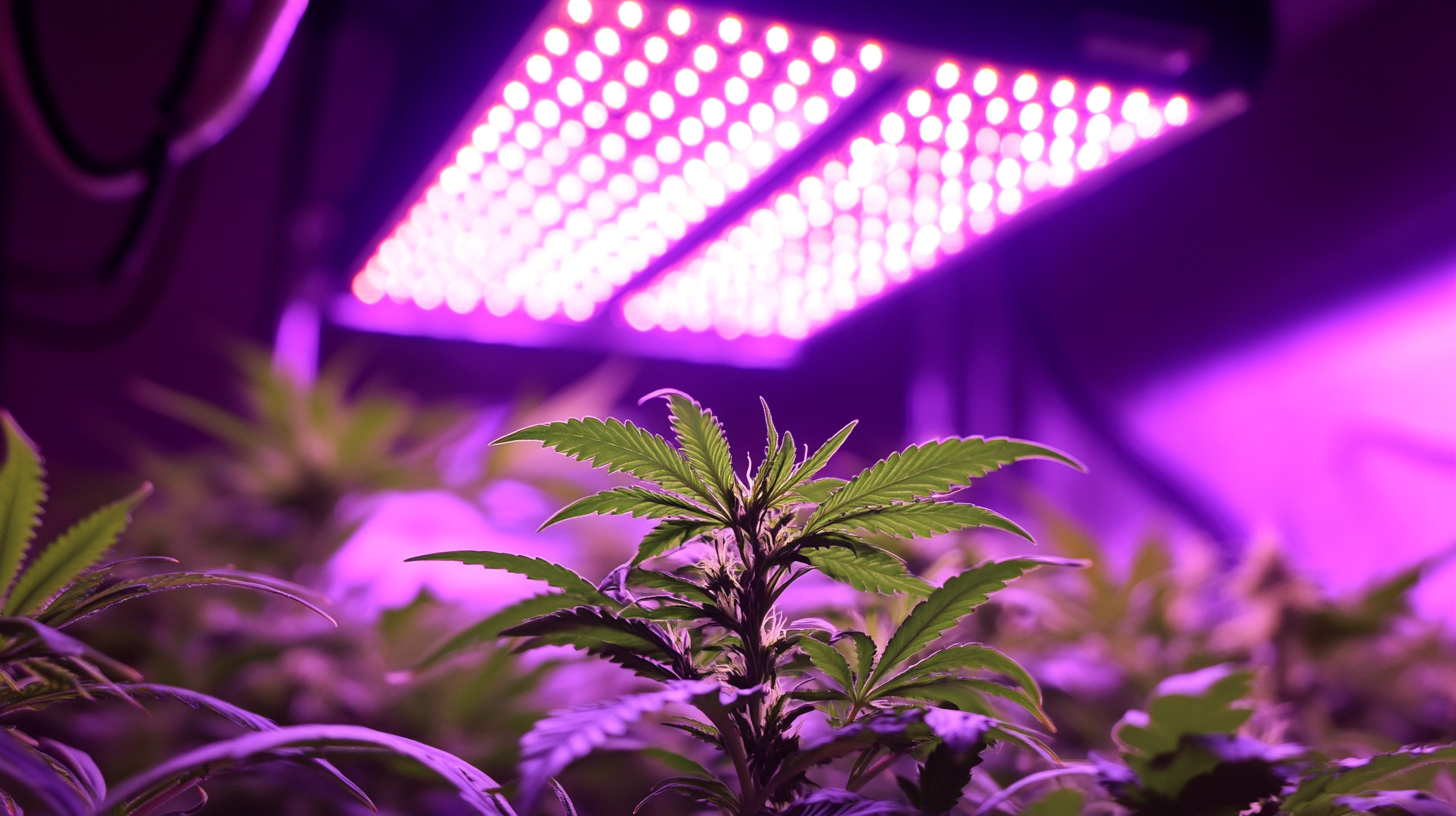Exploring the Versatility and Advantages of Best Led Grow Light for Various Cultivation Needs
In recent years, the horticulture industry has witnessed a significant transformation with the advent of advanced lighting technologies, primarily LED Grow Lights. According to a report by Technavio, the global LED grow light market is expected to grow by over 15% from 2020 to 2024, driven by the increasing demand for efficient and sustainable cultivation methods. These lights not only enhance plant growth and yield but also offer energy efficiency and lower operational costs, making them an attractive alternative to traditional lighting systems. As cultivators seek versatile solutions to meet diverse cultivation needs, understanding the advantages of LED Grow Lights becomes essential. This blog will explore the various types and benefits of LED Grow Lights, highlighting their adaptability for different agricultural practices, from indoor gardening to commercial farming.

Key Benefits of LED Grow Lights:
- Enhanced plant growth and yield
- Energy-efficient operation
- Cost-effective compared to traditional lighting
- Versatility for various cultivation practices
Understanding Different Types of LED Grow Lights Available on the Market
When it comes to indoor gardening and cultivation, LED grow lights have revolutionized the way we approach plant growth. Understanding the different types of LED grow lights available on the market is essential for any grower looking to maximize their yields and efficiency. Broadly, these lights can be categorized into several types: full-spectrum, blooming, and veg lights. Full-spectrum lights provide a balanced spectrum that mimics natural sunlight, making them ideal for all growth stages. They are particularly popular among commercial growers and hobbyists alike due to their versatility.
Blooming lights, on the other hand, are specifically designed to support plants during their flowering stage. These lights typically emit a spectrum that favors red and white wavelengths, which have been shown to boost flower production and overall yields. Conversely, veg lights focus on the blue spectrum, promoting healthy foliage and robust vegetative growth. With the wide array of options available, growers can tailor their lighting setups to meet the unique needs of their plants, ensuring optimal growth and health throughout their lifecycle. Whether you are an experienced cultivator or just starting, understanding these differences will help you choose the right lighting to enhance your indoor gardening experience.
LED Grow Light Types and Their Efficiency Ratings
Key Features to Look for in the Best LED Grow Lights for Your Plants
When choosing the best LED grow lights for your plants, there are several key features that can significantly enhance your indoor gardening experience. First and foremost, consider the light spectrum. Full-spectrum lights that mimic natural sunlight are essential for optimal plant growth, as they support various growth stages from seedling to flowering. Additionally, look for lights with adjustable settings, allowing you to tailor the intensity and duration of light exposure according to specific plant needs.
Another crucial aspect is energy efficiency; high-quality LED lights consume less power while providing brighter output compared to traditional lighting. This not only reduces your electricity bill but also contributes to sustainable gardening practices. Furthermore, consider lights with heat management features, as maintaining the right temperature is vital for healthy plant growth. Investing in versatile LED grow lights can make a notable difference in your cultivation endeavors, ensuring that your plants thrive regardless of their specific requirements.
How LED Grow Lights Enhance Growth for Indoor vs. Outdoor Cultivation
LED grow lights are invaluable tools for both indoor and outdoor cultivation, enhancing plant growth by providing the optimal light spectrum needed for photosynthesis. When considering indoor cultivation, such as growing tomatoes or strawberries, maintaining a consistent temperature between 70 to 80°F is crucial. In this setting, LED lights can simulate natural sunlight, ensuring that plants thrive even without direct exposure. The use of LED lights allows for extended growing periods and can significantly improve the yield and quality of indoor crops.
For outdoor cultivation, while natural sunlight is abundant, there are instances when using LED grow lights can boost growth during cloudy days or extend the growing season into cooler months. Plants such as cannabis and various vegetables benefit from the additional light, particularly in their early growth stages. Choosing the right type of LED grow light tailored to your specific plants—whether indoors or outdoors—can make a substantial difference in achieving a successful harvest, helping gardeners realize the full potential of their cultivation efforts.
Comparing Energy Efficiency and Cost-Effectiveness of LED Grow Lights
As the demand for indoor and greenhouse cultivation grows, the energy efficiency and cost-effectiveness of LED grow lights have become paramount considerations for growers. Recent energy mandates proposed by the California Energy Commission aim to raise indoor cultivation efficiency standards, highlighting the importance of adopting technologies that lower energy consumption. The switch to LED grow lights can significantly reduce electricity usage, which is critical given that energy-intensive indoor farming has been identified as a major contributor to the carbon footprint of the cannabis industry. Reports indicate that transitioning to advanced LED technologies can cut energy use by up to 50% compared to traditional lighting methods.
In a recent review of artificial grow light technologies, various solutions emerged to enhance sustainability in controlled environment agriculture. Hybrid systems and solar spectral shaping are also being explored, providing growers more ways to optimize light while minimizing energy costs. Testing of 16 grow light products demonstrated their effectiveness in plant health and growth, with energy-efficient designs proving to be both effective and cost-saving. As the industry moves towards stricter efficiency standards, these advancements underscore the necessity of investing in cutting-edge LED systems that promise not only improved cultivation outcomes but also align with broader energy conservation goals.

Tips for Optimizing Light Placement and Timing for Maximum Plant Health
When it comes to maximizing the health and growth of plants, the strategic placement and timing of your LED grow lights are crucial.
First, consider the height at which you hang your lights. The optimal distance between the light and your plants can vary depending on the type of plant and the growth stage.
Seedlings require softer, indirect light, so position the lights higher during this phase. As plants mature, lowering the lights can intensify the light exposure, encouraging robust growth.
Additionally, rotating your plants periodically can ensure an even exposure to light, preventing any imbalances that could lead to unhealthy growth patterns.

Timing is just as important as placement. Plants have natural light cycles that dictate their growth processes, so mimicking these cycles can significantly enhance plant vitality.
Most plants thrive under a 16-hour light/8-hour dark cycle during their vegetative phase. However, it is essential to adjust this timing based on the specific needs of different species.
For flowering plants, consider transitioning to a 12/12 cycle to stimulate blooming. Utilizing programmable timers can help automate this process, ensuring that your plants receive precise light exposure at the right intervals, ultimately leading to healthier and more productive growth.
